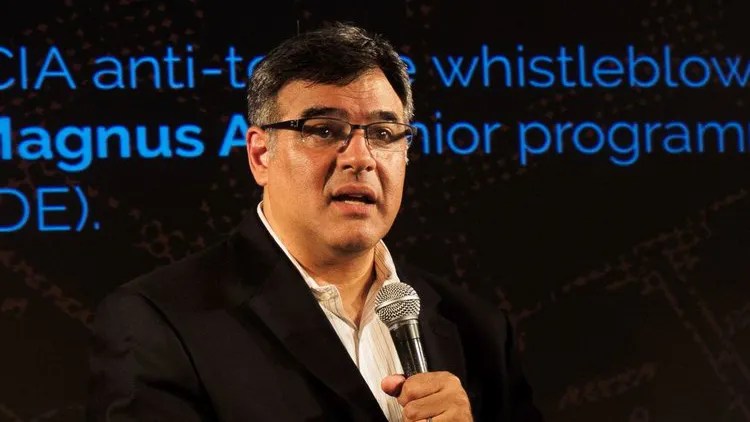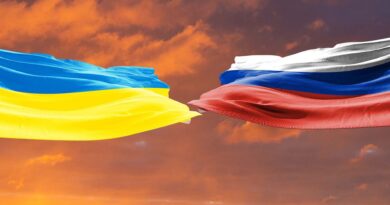CIA in Ukraine — An Ex-CIA Agent’s View
Guest Post by John Kiriakou
Did The New York Times publish its “The Spy War: How the CIA Secretly Helps Ukraine Fight Putin” piece to reveal government secrets in the public’s interest? Or was it to convince Americans that “Now these intelligence networks are more important than ever?”

The New York Times on February 25 published an explosive story of what purports to be the history of the CIA in Ukraine from the Maidan coup of 2014 to the present. The story, “The Spy War: How the CIA Secretly Helps Ukraine Fight Putin,” is one of initial bilateral distrust, but a mutual fear and hatred of Russia, that progresses to a relationship so intimate that Ukraine is now one of the CIA’s closest intelligence partners in the world.
At the same time, the Times’ publication of the piece, which reporters claimed relied on more than 200 interviews in Ukraine, the US, and “several European countries,” raises multiple questions: Why did the CIA not object to the article’s publication, especially with it being in one of the Agency’s preferred outlets? When the CIA approaches a newspaper to complain about the classified information it contains, the piece is almost always killed or severely edited. Newspaper publishers are patriots, after all. Right?
Was the article published because the CIA wanted the news out there? Perhaps more important was the point of the article to influence the Congressional budget deliberations on aid to Ukraine? After all, was the article really just meant to brag about how great the CIA is? Or was it to warn Congressional appropriators, “Look how much we’ve accomplished to confront the Russian bear. You wouldn’t really let it all go to waste, would you?”
The Times’ article has all the hallmarks of a deep, inside look at a sensitive—possibly classified—subject. It goes into depth on one of the intelligence community’s Holy of Holies, an intelligence liaison relationship, something that no intelligence officer is ever supposed to discuss. But in the end, it really isn’t so sensitive. It doesn’t tell us anything that every American hasn’t already assumed. Maybe we hadn’t had it spelled out in print before, but we all believed that the CIA was helping Ukraine fight the Russians. We had already seen reporting that the CIA had “boots on the ground” in Ukraine and that the U.S. government was training Ukrainian special forces and Ukrainian pilots, so there’s nothing new there.
The article goes a little further in detail, although, again, without providing anything that might endanger sources and methods. For example, it tells us that:
- There is a CIA listening post in the forest along the Russian border, one of 12 “secret” bases the US maintains there. One or more of these posts helped to prove Russia’s involvement in the 2014 downing of Malaysia Airlines Flight 17. That’s great. But the revelation exposes no secrets and tells us nothing new.
- Ukrainian intelligence officials helped the Americans “go after” the Russian operatives “who meddled in the 2016 US presidential election.” I have a news flash for the New York Times: The Mueller report found that there was no meaningful Russian meddling in the 2016 election. And what does “go after” mean?
- Beginning in 2016, the CIA trained an “elite Ukrainian commando force known as Unit 2245, which captured Russian drones and communications gear so that CIA technicians could reverse-engineer them and crack Moscow’s encryption systems.” This is exactly what the CIA is supposed to do. Honestly, if the CIA hadn’t been doing this, I would have suggested a class action lawsuit for the American people to get their tax money back. Besides, the CIA has been doing things like this for decades. The CIA was able to obtain important components of Soviet tactical weapons from ostensibly pro-Soviet Romania in the 1970s.
- Ukraine has turned into an intelligence-gathering hub that has intercepted more Russian communications than the CIA station in Kiev could initially handle. Again, I would expect nothing less. After all, that’s where the war is. So of course, communications will be intercepted there. As to the CIA station being overwhelmed, the Times never tells us if that is because the station was a one-man operation at the time or whether it had thousands of employees and was still overwhelmed. It’s all about scale.
- And lest you think that the CIA and the U.S. government were on the offensive in Ukraine, the article makes clear that, “Mr. Putin and his advisers misread a critical dynamic. The CIA didn’t push its way into Ukraine. U.S. officials were often reluctant to fully engage, fearing that Ukrainian officials could not be trusted, and worrying about provoking the Kremlin.”
It’s at this point in the article that the Times reveals what I believe to be the buried lead: “Now these intelligence networks are more important than ever, as Russia is on the offensive and Ukraine is more dependent on sabotage and long-range missile strikes that require spies far behind enemy lines. And they are increasingly at risk: “If Republicans in Congress end military funding to Kiev, the CIA may have to scale back.” (Emphasis mine.)
This is the difference between an article in the mainstream media that purports to be a breakthrough in national security reportage and a revelation from a national security whistleblower. In the former, there is cooperation from serving intelligence officers and, sometimes, policymakers, all of whom are anonymous. There is apparently no effort by the intelligence community to kill the piece or to soften its impact. (After all, it makes them look good.) No real secrets are revealed. And there is a policy lesson at the end of the story: Fund more war or the bad guys will win. Trust us. If you knew what we know…
In cases where the revelations are not authorized, the CIA director will call the newspaper’s publisher directly to protest that publication will put American lives or ongoing operations in danger and will cause grave harm to national security, whether that’s actually true or not. If there is pushback from the publisher, he or she can then expect a call from the national security advisor. It’s all very official and threatening, which is exactly the point.
One of the reasons that I believe the Times article was “authorized” by the intelligence community is because of what isn’t in it. There’s no mention, for example, that the United Nations has deemed Ukraine to be one of the most corrupt countries in the world, where money just seems to disappear into foreign accounts and the pockets of Ukrainian government officials. There’s no mention that Ukraine has become a “supermarket” for black market weapons and that western weapons meant for the war effort have popped up all over the world. And there is no mention at all that it was the CIA and the State Department that were responsible for the 2014 overthrow of the Ukrainian government in the first place, an action that resulted in Russia’s decision to invade eight years later.
I know the CIA well. I spent 15 years there, both in analysis and in counterterrorism operations. I know how CIA leaders think, how they push the legal and ethical envelope until somebody in a position of authority tells them “stop!” I’ve sat in on meetings where decisions like those in the New York Times article have been made. I’ve participated in strategy sessions where CIA officers worked to manipulate politics and policy.
The bottom line here is rather simple. Don’t believe them. Don’t believe either the CIA or the New York Times. Seldom are these major international issues so simple and so divided easily between good guys and bad guys. Life should be so easy. Years ago, when my eldest sons were little boys, I took them to Madison Square Garden to see a WWE “professional wrestling” show. A half-hour into it, I asked my then-nine-year-old, “So, I’m confused. Who’s the good guy and who’s the bad guy.” He responded, “That’s just it, dad. There is no good guy.” That’s exactly what we’re seeing in Ukraine. Don’t let the New York Times convince you otherwise.




